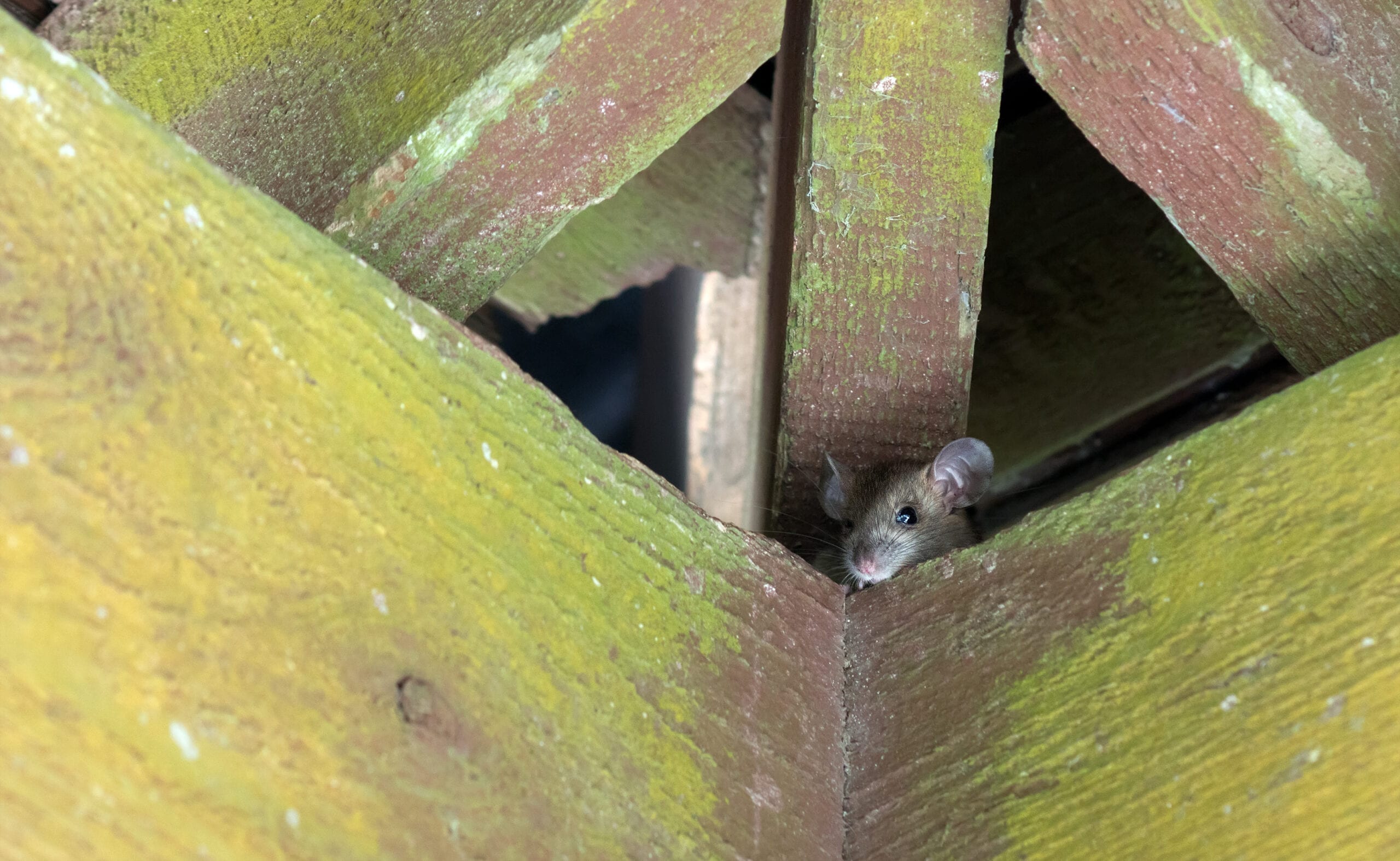
Roof rats are pesky, damaging, disease & parasite spreading rodents. In order to get rid of roof rats in Arizona, you’ll need to understand why and where they infest, so you can find and rid your home of them for good. Since roof rats spend most of their time above ground, they aren’t the type of rat you’ll see scurrying across your garage floor. They prefer attics, eaves, trees, utility lines, and other places that may be out of sight.
Signs of Roof Rats
Roof rats are typically black or brown, but can be lighter, have a pointed nose, and feature a very long, hairless, distinctive tail. Since they can resemble other invasive rats in Arizona, their tail and their habits are what sets them apart. In the cooler months, they seek out warmth, and may make their way into your home. They are active year round so they are always on the lookout for food sources.
One of the signs of roof rats you should look for is one of their favorite food sources: fruit. They enter through the fruit rind and consume the inside, so hollowed out citrus is indicative of roof rats. Many other critters may feast on the fruit hanging from the trees in your yard, but none leave the fruit the way roof rats do. Roof rats prefer to nest above ground in secluded areas, so high up in palm and citrus trees, and within attics make a perfect home. So you may notice sounds like scratching noises coming from within your walls or ceiling if you have a roof rat infestation. They are prolific chewers, so damage to electrical wires is also a common sighting.
Problems Caused by Roof Rats
While rodents in general are typically good for the ecosystem, when they come in close contact with humans they become an issue. Roof rats are invasive to Arizona, but when in the wild, do not cause many problems. When they begin encroaching on our homes and businesses, they can cause serious damage and spread disease and parasites. Inside your home, they can cause structural damage by chewing through wood, insulation, and walls. They can interrupt or destroy wiring systems, which in turn can pose fire hazards.
Roof rats are pretty reclusive and don’t really want to interact with humans or pets, as they pose as a risk to their own survival. However, they are known to carry diseases that can affect both our health and our pets health, including food contamination, leptospirosis, rat-bite fever, and others, as well as carry parasites known to transmit plague (yes, it’s still around, and modern cases in humans do occur in Arizona). Some of these diseases can be transmitted directly through contact such as a bite, other through contact with their droppings.
One place many don’t think of is sitting out in their driveway. Roof rats have been known to infest engine compartments of vehicles, and can do so overnight! They can tear through wiring & clog air intakes while establishing a nest, rendering your car useless while you sleep. Considering an engine compartment fits the criteria of being elevated and secluded, it makes sense that roof rats attempt to make your car their home.
Getting Rid of Roof Rats
Once a roof rat infestation takes hold, it can be very difficult to eradicate. One reason is because of the rate in which roof rats breed. They typically have about 8 offspring and can breed up to 5 times a year. Multiply that out and you’re looking at hundreds of roof rats in a very short period of time. Roof rats are also very cautious creates. They tend to avoid new objects, so setting traps can often be a fruitless endeavor. Poison is another option, but it can be difficult to reach an entire population this way.
The most effective way to get rid of roof rats in your Arizona home is by contacting an experienced roof rat removal professional. Bug Guardian knows the Phoenix area and the roof rats that invade it, so contact us today if you suspect you have a roof rat problem.
